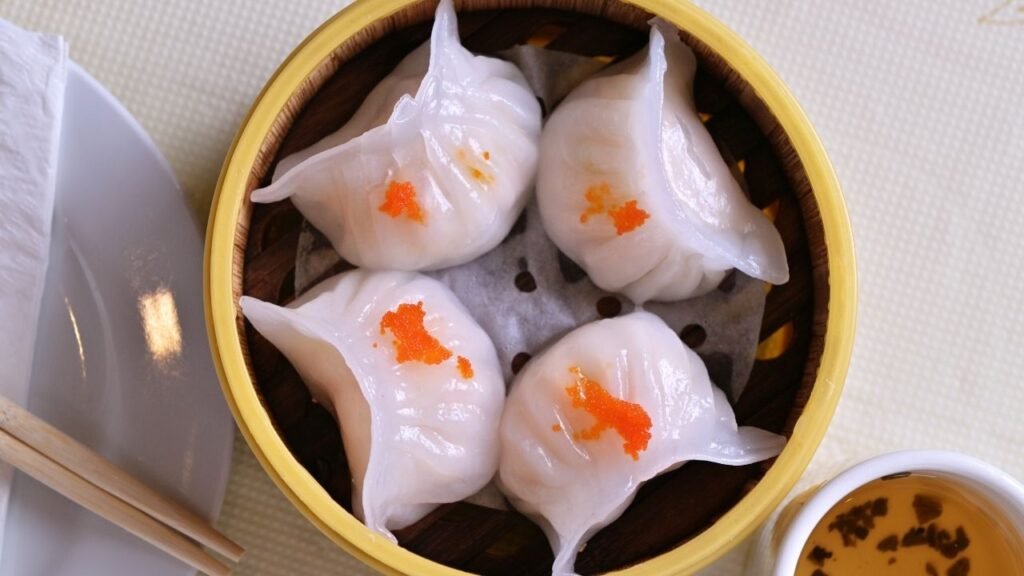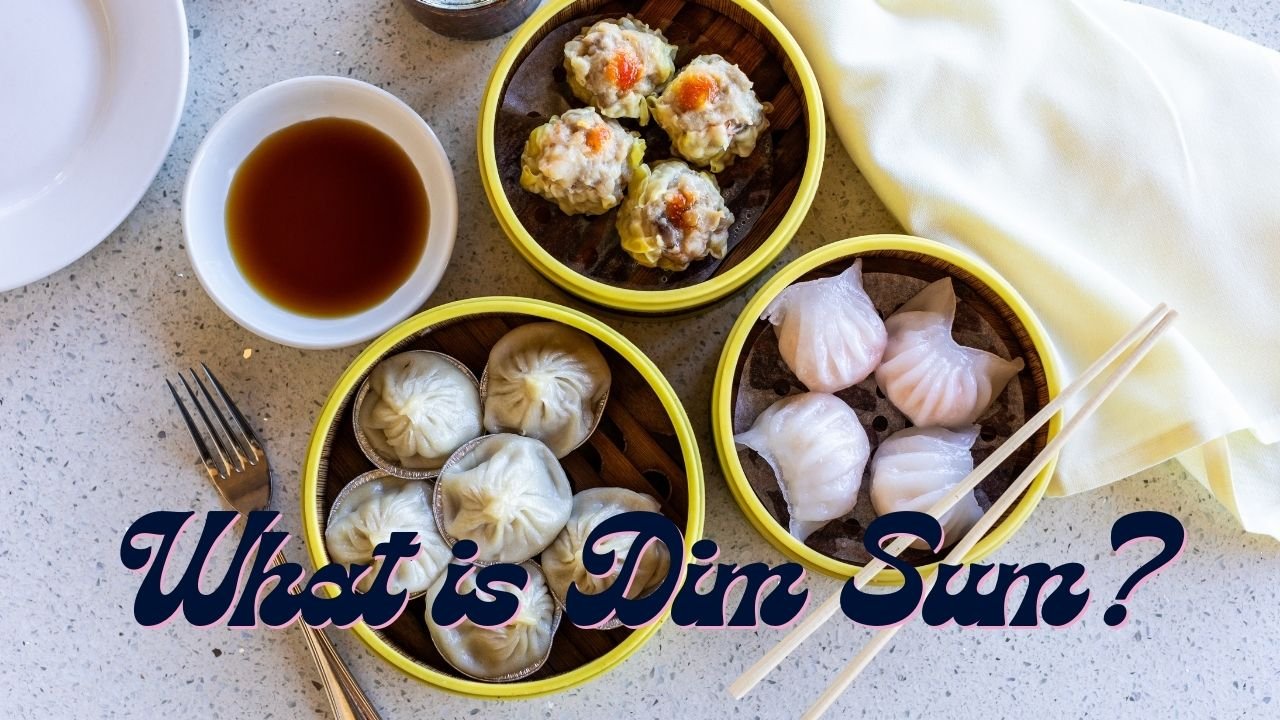Dim sum, literally because of this “contact the coronary heart,” is a celebrated culinary manner of life in Chinese cuisine that has captured the hearts of meals lovers worldwide. Characterized via chunk-sized quantities of flavorful dishes served with tea, dim sum is more than only a meal—it’s a cultural ritual, a party, and an exploration of flavor, texture, and craftsmanship.
Whether you’re traveling a bustling dim sum restaurant in Hong Kong or looking for to recreate it at home, knowledge the start, cultural importance, and traditional dishes of dim sum can raise your appreciation of this culinary art form.
The Origin of Dim Sum
Dim sum has its roots in the ancient tea homes along the Silk Road and southern China, specifically in Guangdong province. Originally, dim sum turned into not a full meal however a mild snack served with tea to weary vacationers. Over centuries, it evolved into a sophisticated dining experience known as “yum cha”, that means “drink tea.”
The philosophy at the back of dim sum is straightforward yet profound: small, delicately organized quantities which might be visually attractive, fragrant, and flavorful. The concept of “touching the heart” reflects the intention of those dishes to pride and nourish, both bodily and emotionally.
The Cultural Significance of Dim Sum
Dim sum is deeply ingrained in Chinese social culture. Traditionally, it is enjoyed at some stage in morning and early afternoon hours, often as a leisurely brunch with circle of relatives or buddies. A dim sum meal is interactive and communal: plates are shared, conversations flow, and tea is continuously poured.
The dining revel in emphasizes persistence and appreciation. Dishes are frequently served in steamer baskets or on small plates, allowing diners to sample a whole lot of flavors in a single meal. Tea is indispensable to the ritual, helping digestion and complementing the wealthy tastes of the food.
Over time, dim sum has become a international phenomenon, with restaurants serving each conventional classics and progressive creations. Yet, the essence stays the same: a mix of culinary artistry, hospitality, and network.

Classic Dim Sum Dishes
With loads of types, dim sum offers some thing for every palate. Here are a number of the most iconic dishes you’ll encounter:
Dumplings
- Har Gow (Shrimp Dumplings): Translucent wrappers filled with juicy shrimp.
- Siu Mai (Pork and Shrimp Dumplings): Open-topped dumplings often garnished with roe.
- Chive Dumplings: Packed with Chinese chives for a fragrant bite.
Buns
- Char Siu Bao (BBQ Pork Buns): Soft, fluffy buns with sweet-salty roast pork filling.
- Lotus Paste Buns: Sweet steamed buns with smooth lotus seed filling.
Rolls & Wraps
- Cheung Fun (Rice Noodle Rolls): Silky rice rolls filled with shrimp, beef, or BBQ pork, topped with soy-based sauce.
- Spring Rolls: Crispy rolls stuffed with vegetables or meat.
Steamed & Braised Dishes
- Chicken Feet (Feng Zhua): Braised in a savory sauce, beloved for their texture.
- Spare Ribs with Black Beans: Small pork rib pieces steamed with garlic and fermented beans.
Sweet Treats
- Egg Tarts: Flaky pastry filled with creamy custard.
- Mango Pudding: Light, refreshing, and often topped with evaporated milk.
- Sesame Balls (Jian Dui): Crispy glutinous rice balls filled with red bean paste.
Dim Sum Today: A Tradition That Keeps Evolving
While dim sum remains deeply rooted in Cantonese historical past, it has also embraced innovation. Modern chefs test with fusion flavours — truffle-infused dumplings, beetroot-wrapped har gow, even vegan dim sum — whilst staying authentic to the craft of home made perfection.
Meanwhile, dim sum’s international attain maintains to develop. From high-quit restaurants to supermarket freezer aisles, those chew-sized delights have received hearts worldwide. Nonetheless, irrespective of how it adapts, the soul of dim sum endures: the warmth of shared plates, the fun of unwrapping a steamy parcel, and the easy delight of true meals among top company.
A Taste of Tradition, Shared with Every Bite
Dim sum whispers a story centuries antique — a story spun from fragrant steam, time-honoured craft, and the quiet warm temperature of shared tables. Born in Silk Road tea houses and now savoured worldwide, its actual essence stays unchanged: a scrumptious thread connecting generations, cultures, and kindred spirits.
Every sensitive pleat in a har gow, every gentle crumb of char siew bao, includes the devotion of arms that have fashioned those traditions for lifetimes. When you delight in a silky dumpling or the creamy consolation of a dan tat, you’re not simply dining —but actively preserving a residing heritage alive.
Fancy weaving yourself into this tale? At Fu Yuan Teochew Dining, we craft proper, hand-pleated dim sum every day — served solely at lunch. Let our baskets bring Canton’s soul on your desk. Because the finest tales, like the finest food, are always shared. Join us for lunch and flavor culture made tangible.
Tips for Enjoying Dim Sum Like a Local
- Go Early: Traditional dim sum is pleasant loved in the morning or early afternoon while dishes are hottest.
- Share Generously: Dim sum is communal, so order a whole lot of dishes for the table to share.
- Pair with Tea: Choose teas like Pu-erh, Jasmine, or Oolong to complement the flavors and cleanse the palate.
- Try New Dishes: Don’t hesitate to experiment with uncommon or seasonal offerings—dim sum is about discovery and pride.
Conclusion
Dim sum is greater than a collection of small dishes; it’s far a party of Chinese culinary artistry, way of life, and social connection. From its origins in tea houses of southern China to modern restaurants global, dim sum maintains to “contact the heart” of diners with its sensitive flavors, diverse textures, and communal spirit.
By knowledge the records, lifestyle, and classic dishes of dim sum, you may absolutely respect the artistry at the back of each bite. Whether you’re savoring shrimp dumplings, indulging in candy egg muffins, or taking part in tea with cherished ones, dim sum gives an experience that is both delicious and deeply significant.
Embracing dim sum isn’t pretty much eating—it’s about connection, lifestyle, and the joy of sharing meals that delights all senses. Next time you sit down for a dim sum meal, take a second to experience now not simplest the flavors however additionally the centuries of subculture and craftsmanship behind every dish.
